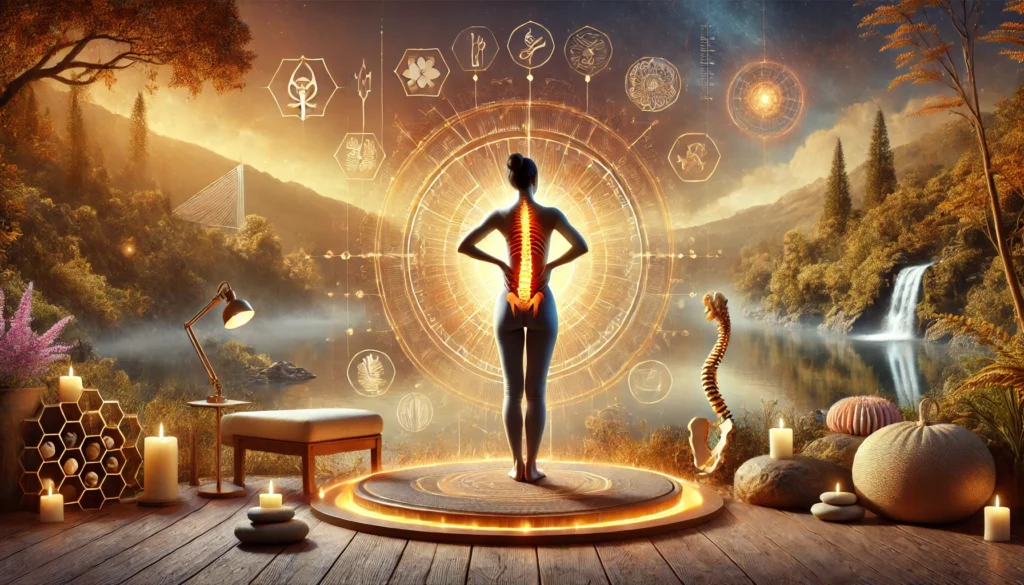Menopause is a natural phase in a woman’s life that brings various physical and emotional changes. One common but often overlooked symptom is back pain, which can be a significant source of discomfort. As hormonal changes occur, particularly the decline in estrogen levels, many women experience changes in their musculoskeletal system, leading to back pain. In this article, we’ll explore effective ways to manage and treat menopause-related back pain.
Understanding Menopause and Back Pain
Menopause typically occurs around age 50, marking the end of a woman’s menstrual cycle and fertility. However, it’s important to note that the years leading up to menopause, known as perimenopause, can also bring a variety of symptoms, including back pain. There are several reasons why menopause can lead to or exacerbate back pain:
- Hormonal Changes: A decline in estrogen during menopause can lead to the weakening of bones and muscles, which may cause discomfort in the back.
- Weight Gain: Many women gain weight during menopause, particularly around the abdominal area. This added weight can put extra strain on the lower back.
- Osteoporosis: Estrogen is important for maintaining bone density, and its decline during menopause can increase the risk of osteoporosis. Weakened bones can lead to spinal fractures, resulting in back pain.
- Changes in Posture: As a result of weight gain, muscle loss, or changes in the spine, posture may shift, leading to additional strain on the back.
- Stress and Sleep Issues: Menopause can also bring about mood changes, stress, and poor sleep, all of which can contribute to tension in the back muscles.
Effective Ways to Treat Menopause Back Pain
While back pain during menopause is common, it doesn’t have to be a permanent part of life. Here are some practical and effective treatment options for managing and alleviating back pain during menopause.
Exercise and Physical Therapy
One of the best ways to treat menopause-related back pain is through exercise. Regular physical activity can help strengthen the muscles that support your spine, improve posture, and reduce inflammation. Here are some helpful exercises:
- Core Strengthening: Exercises like planks, pelvic tilts, and bridges help strengthen the muscles of the abdomen and lower back, which support the spine.
- Yoga: Gentle yoga poses can improve flexibility, increase muscle strength, and reduce tension. Poses like cat-cow, child’s pose, and downward dog can stretch and relax the back muscles.
- Walking and Swimming: Low-impact activities like walking and swimming are excellent for increasing circulation and improving mobility without straining the back.
If you’re experiencing severe back pain, consulting a physical therapist can be beneficial. A physical therapist can develop a personalized exercise plan that targets the specific muscles contributing to your back pain.
Pain Relief Medications
For immediate relief from back pain, over-the-counter pain medications like ibuprofen or acetaminophen can be helpful. These medications can reduce inflammation and alleviate discomfort. However, always follow the recommended dosage and consult with your healthcare provider if the pain persists.
In some cases, a doctor might recommend topical pain relievers like creams or gels (e.g., Voltaren) for targeted relief. These can be applied directly to the painful area and absorbed into the skin for faster results.
Posture Correction
Improper posture can exacerbate back pain, especially during menopause when changes in the body may lead to a shift in posture. Maintaining good posture can relieve strain on your back and prevent further discomfort. To improve your posture:
- Sit with support: Use a chair that offers lower back support or place a small cushion behind your lower back.
- Stand tall: Keep your shoulders back and avoid slumping forward. Imagine a straight line from your head to your tailbone.
- Sleep in a supportive position: Use a medium-firm mattress and sleep on your side with a pillow between your knees for proper spine alignment.
Diet and Supplements
A healthy diet plays a crucial role in managing back pain during menopause. Eating nutrient-rich foods can help support bone health and reduce inflammation:
- Calcium: Adequate calcium intake is essential to maintain bone density, which is particularly important during menopause. Include dairy products, leafy greens, and fortified plant-based milks in your diet.
- Vitamin D: Vitamin D helps the body absorb calcium and plays a role in bone health. Sunlight exposure and vitamin D-rich foods like fatty fish and fortified cereals are good sources.
- Anti-inflammatory foods: Foods like turmeric, ginger, and omega-3 fatty acids (found in fish and flaxseeds) can help reduce inflammation in the body, including the back muscles and joints.
If your back pain is related to osteoporosis, your doctor may recommend calcium and vitamin D supplements to help strengthen bones.
Stress Management and Relaxation

Since stress can contribute to muscle tension and exacerbate back pain, practicing relaxation techniques is essential during menopause. Consider these stress-reducing practices:
- Meditation and deep breathing: These can help lower stress levels and relax your muscles.
- Massage therapy: A professional massage can release tension in the back muscles and improve circulation.
- Acupuncture: Some women find acupuncture helpful in relieving pain and reducing stress, making it a possible treatment for menopause-related back pain.
Hormone Replacement Therapy (HRT)
For women experiencing significant discomfort from menopause, hormone replacement therapy (HRT) might be an option. HRT helps balance estrogen levels, which can alleviate many menopause symptoms, including back pain caused by hormonal changes. However, HRT should be discussed with a healthcare provider to weigh the potential benefits and risks.
When to See a Doctor
If your back pain persists or worsens, or if you experience additional symptoms like numbness, tingling, or severe weakness, it’s important to consult with a healthcare professional. In some cases, back pain during menopause may be related to underlying conditions like osteoporosis or a herniated disc, which require medical attention.
FAQs:
1 Why does menopause cause back pain?
Menopause leads to hormonal changes that can weaken bones, muscles, and joints, contributing to back pain.
2 What exercises help with menopause back pain?
Core strengthening, yoga, and low-impact activities like walking or swimming can help relieve back pain.
3 Can diet help with menopause back pain?
Yes, a diet rich in calcium, vitamin D, and anti-inflammatory foods can support bone health and reduce inflammation.
4 Is hormone replacement therapy (HRT) effective for back pain?
HRT can help balance estrogen levels, potentially reducing back pain associated with menopause.
5 When should I see a doctor for menopause back pain?
Consult a doctor if the pain persists, worsens, or is accompanied by numbness, tingling, or weakness.
Conclusion:
Menopause-related back pain is a common issue for many women, but it doesn’t have to be endured silently. By incorporating regular exercise, maintaining good posture, using pain relief methods, and focusing on stress management and a healthy diet, women can find significant relief from back pain during menopause. If the pain continues or becomes severe, seeking professional help can lead to an effective treatment plan tailored to your needs. With the right approach, menopause-related back pain can be managed, allowing you to live a more comfortable and active life.
Read More Relevant Article:
- Read Also: Upper Back Pain in Pneumonia: Causes, Symptoms, and Treatment – Experiencing Upper Back Pain with Pneumonia!
- Read Also: Lower Back Pain and Spiritual Attack: Understanding the Connection – Spiritual Insights into Lower Back Pain!
- Read Also: Disability Function Report Example Answers for Back Pain – Effective Disability Function Report Examples for Back Pain!











